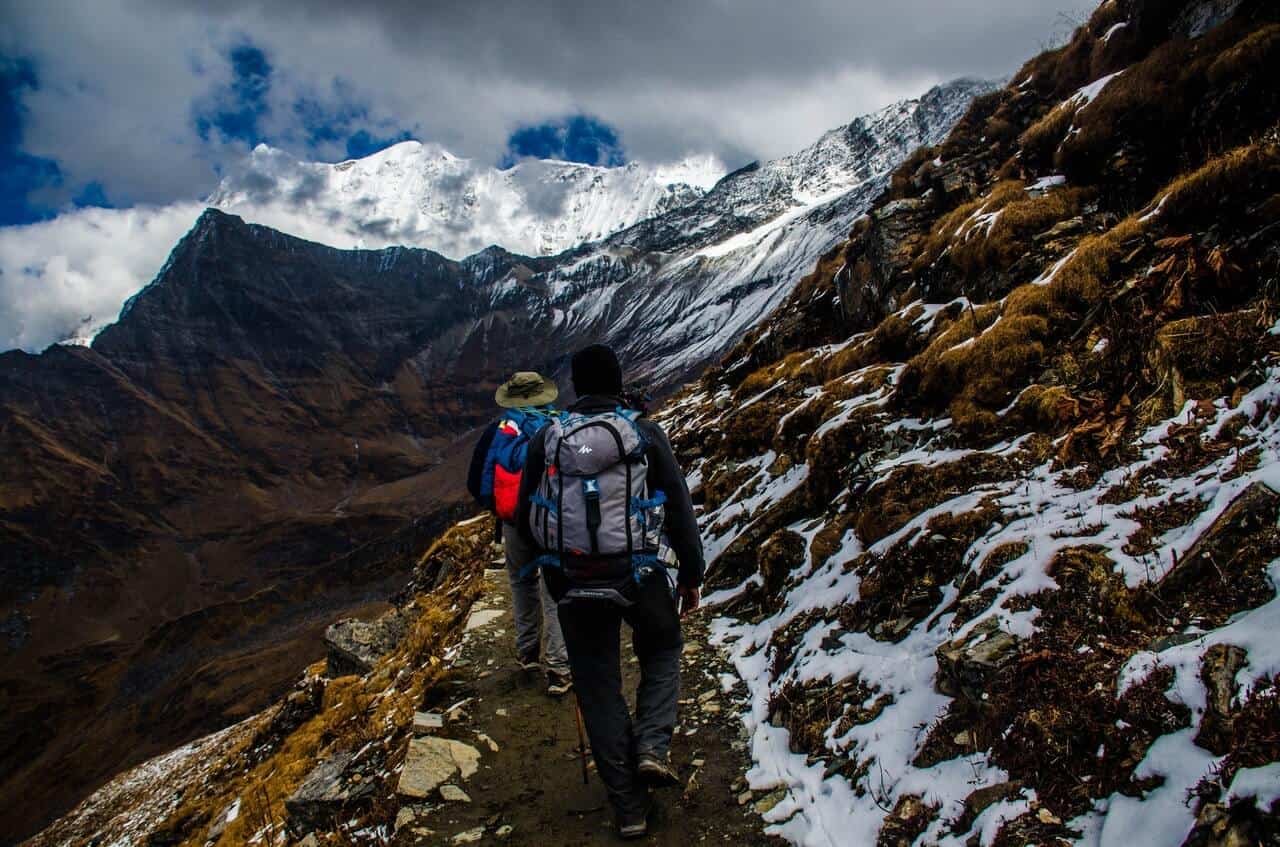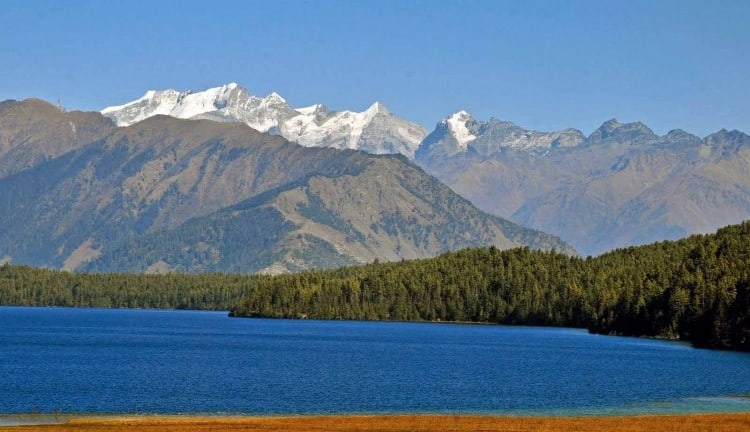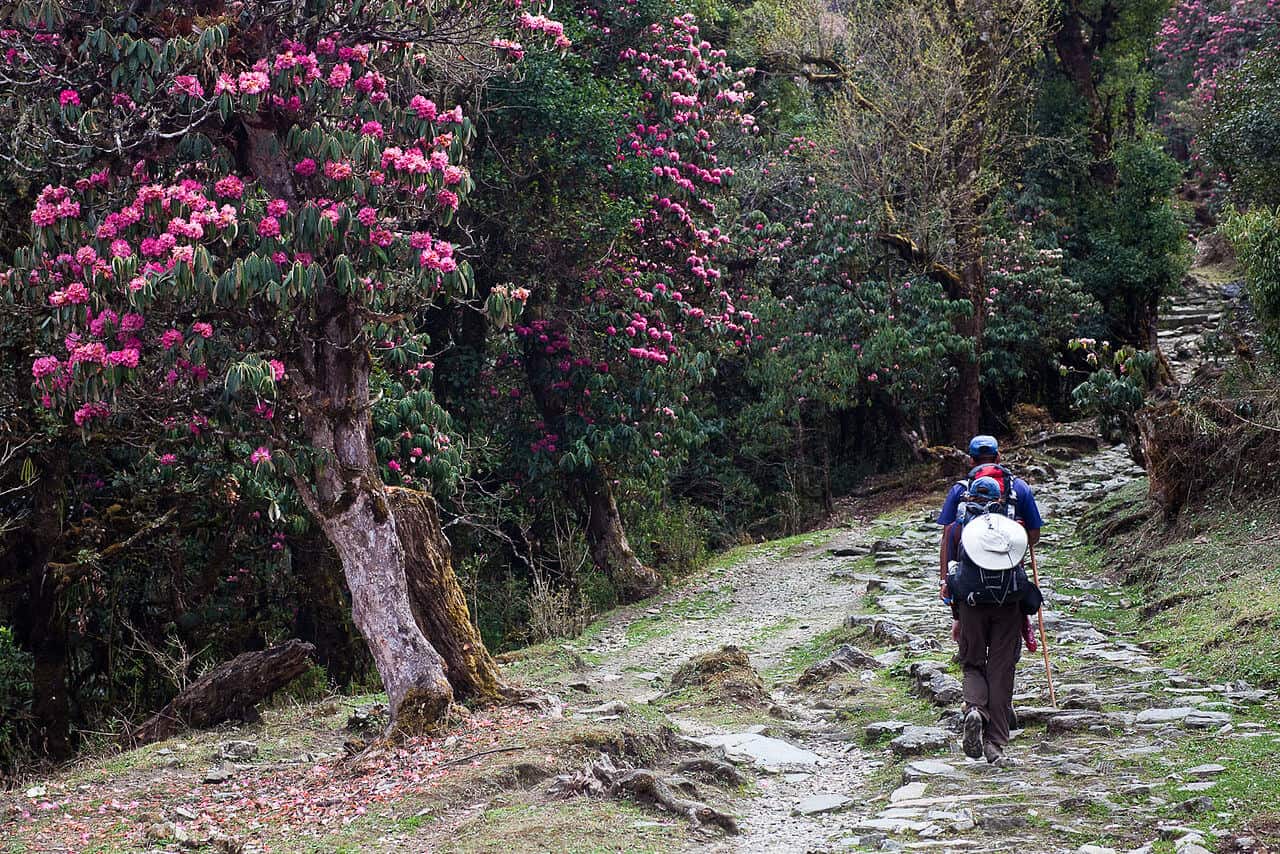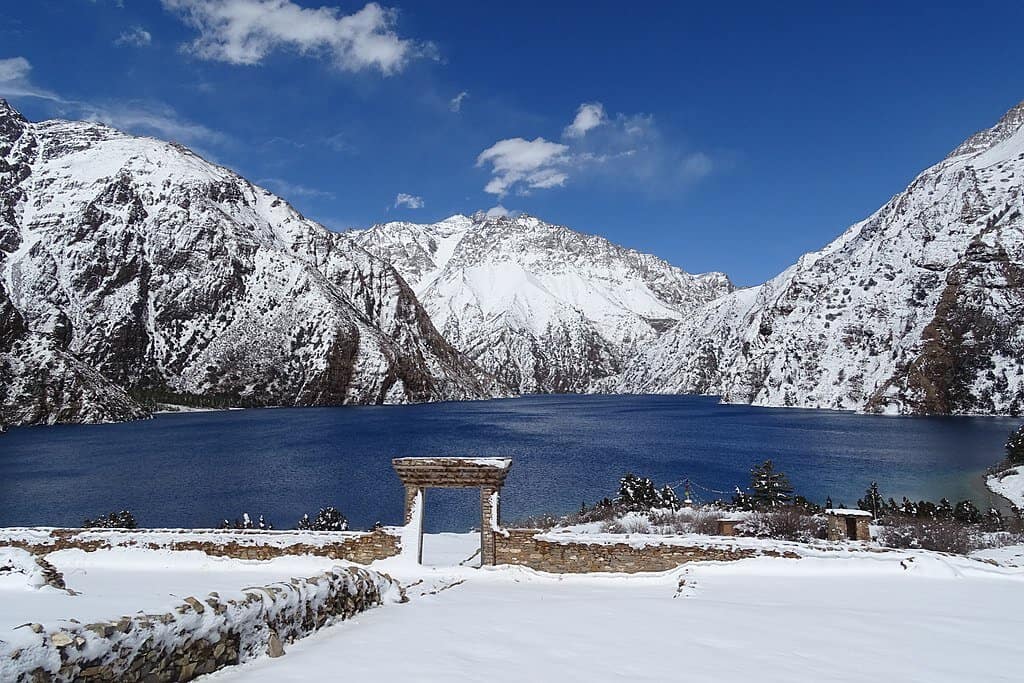It is no surprise that the Himalayas of Nepal has held its stature as one of the best trekking destinations on earth. Thousands of trekkers and adventure enthusiasts travel to Nepal every year to savor the beauty of the mountains and its rustic lifestyles.
While Nepal is more popular for extended treks like Everest Base Camp Trek or Annapurna Base Camp Trek, the shorter treks are no less of an experience. Whether you choose to walk on the mountain trails or witness the authentic lifestyle of traditional villages, short treks in Nepal also offer great diversity and unique experiences.
If you’re a beginner trekker or do not have enough time to undertake long adventures in the Himalayas, short treks are an excellent option to satisfy your trek cravings. Nepal offers a variety of trails, even for short treks, ranging from a couple of days to week-long adventures.
There are plenty of route options for short treks, and each offers a different taste of uniqueness, making them beyond comparison. The following are the 10 best short treks in Nepal:
Contents
- 1. Ghorepani Poonhill Trek
- 2. Chisapani Nagarkot Trek
- 3. Dhampus Village Trek
- 4. Ghandruk Trek
- 5. Balthali Village Trek
- 6. Kalinchowk Trek
- 7. Sikles Trek
- 8. Panchase Trek
- 9. Royal Trek
- 10. Everest View Trek
- Best Time to Trek in Nepal
- Accommodation and Food
- Packing List for Trekking in Nepal
- Guided or Independent — How to Trek in Nepal
- Insurance for the Trek
- Useful Tips for Trekking in Nepal
- FAQs
- Conclusion
1. Ghorepani Poonhill Trek
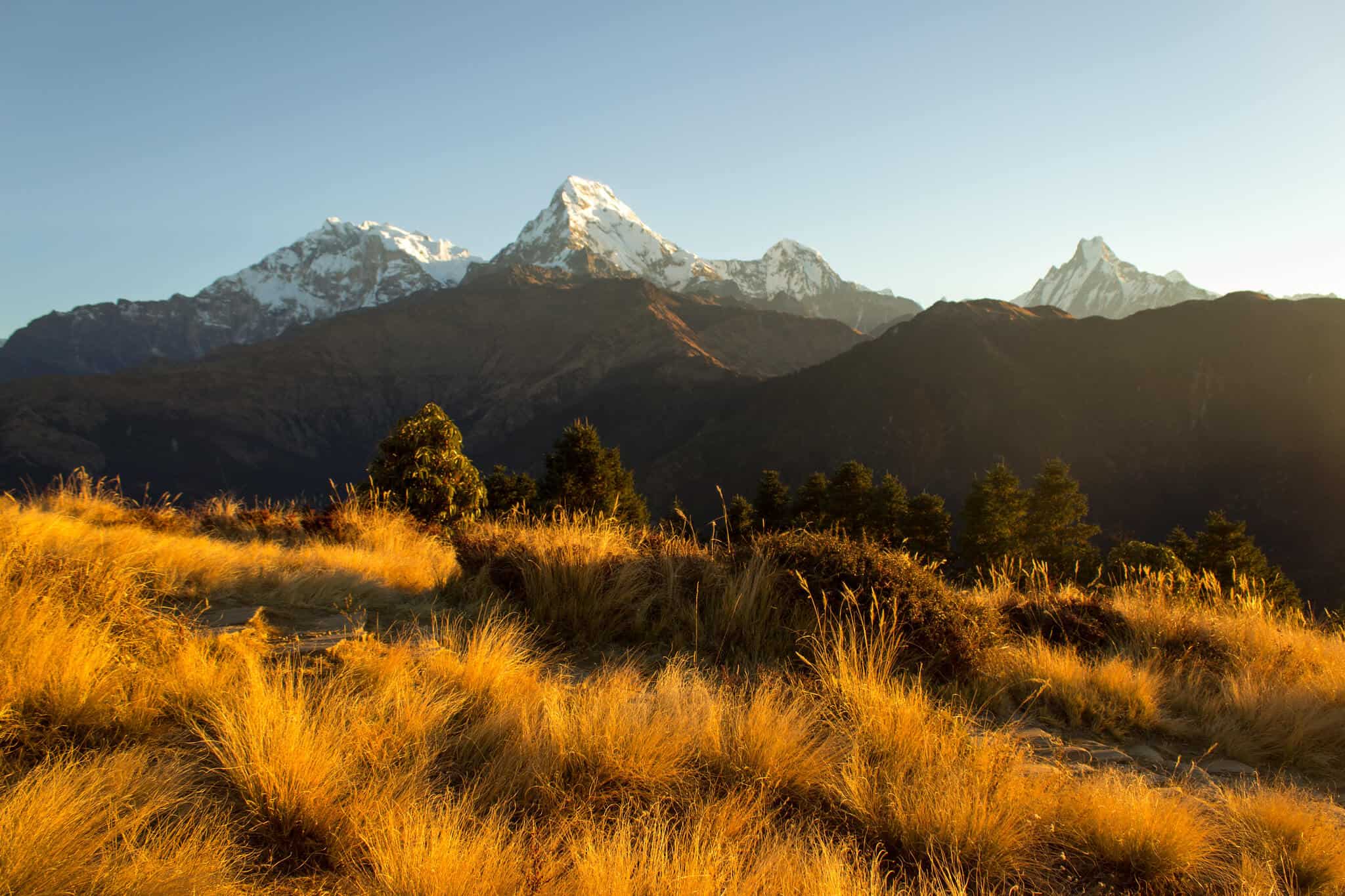
Ghorepani Poon Hill Trek, also known as Annapurna Panorama Trek, is a short and comfortable walk in the lap of Annapurna Sanctuary. This trek is an excellent way to embark on an adventure that reflects cultural and historical diversity along with high Himalayan panoramas.
In a brief spell of only five days, Ghorepani Poonhill offers the diversity and uniqueness of Annapurna. From spectacular mountain panorama to distinctive cultural insights, this short trek combines all the essentials of the classic Himalayan treks.
For novice travelers who are not keen on taking the challenge of Annapurna Base Camp or Annapurna Circuit Trek, Ghorepani Poonhill serves as the ideal choice to embrace the beauty of the Himalayas.
Poon Hill lies at the center of attention on the Annapurna Panorama Trek. At an altitude of 3,210 meters, this hilltop is the highest point on the trek. Famous for the marvelous sunrise and sunset views, Poon Hill also offers an opportunity to relish a wide range of snow-capped massifs, including Annapurna, Machhapuchhre, Dhaulagiri, and Hiunchuli.
Along with the mountain therapy, Ghorepani Poon Hill also rewards the trekkers with historical and cultural experiences.
Ghorepani Poonhill Trek Facts
| Number of Days | 5 Days |
| Maximum Elevation | 3,210 meters at Poon Hill |
| Trip Difficulty | Easy |
| Best Time to Trek | Autumn and Spring |
| Accommodation | Teahouses |
| Walking Duration | 5-6 hours per day |
Ghorepani Poonhill Trek Highlights
- Hike to Poon Hill, the popular vantage point of Annapurna region
- Explore the Gurung village of Ghandruk
- Enjoy the panoramic view of Annapurna, Machhapuchhre, Dhaulagiri, and Hiunchuli
- Indulge with the locals and experience the warm hospitality
- Relish the sensational sunrise from Poon Hill
Outline Itinerary of Ghorepani Poonhill Trek
| Day | Description | Altitude from (Meter) | Altitude to (Meter) | Trekking Duration |
|---|---|---|---|---|
| 1 | Drive from Pokhara to Nayapul (1,070 meters) and Trek to Tikhedhunga | 900 | 1,570 | 6-7 hours |
| 2 | Trek from Tikhedhunga to Ghorepani | 1,570 | 2,750 | 5-6 hours |
| 3 | Hike to Poon Hill (3,210 meters) and Trek to Tadapani | 2,750 | 2,500 | 4-5 hours |
| 4 | Trek from Tadapani to Ghandruk | 2,500 | 1,940 | 3-4 hours |
| 5 | Drive from Ghandruk to Pokhara via Nayapul (1,070 meters) | 1,940 | 900 | 5-6 hours |
2. Chisapani Nagarkot Trek
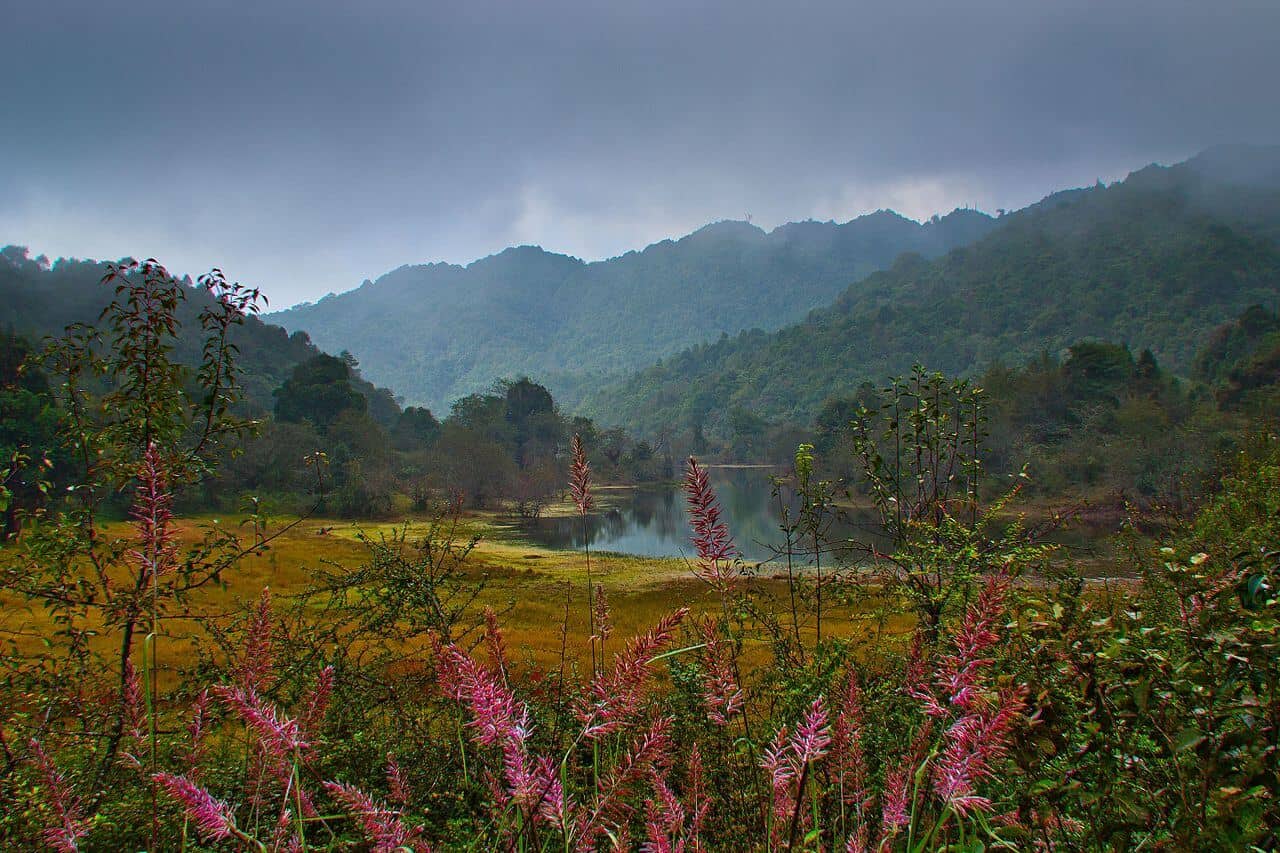
Chisapani Nagarkot is one of the most popular treks on the outskirts of Kathmandu valley. Short and comfortable, this trek offers a marvelous experience of the countryside and its rustic lifestyle.
From the busy streets of Kathmandu to the wilderness of the country, Chisapani Nagarkot Trek offers extreme diversity in terms of nature and landscapes. This short trek combines enchanting forests, cascading waterfalls, stunning mountain views, terraced farmlands, and remote villages into a great package.
Starting just 13 kilometers away from Kathmandu at Sundarijal, the route navigates through the forested trails of Shivapuri National Park. On the first day, the trail passes through several villages, farmlands, and dense forests towards the hill station of Chisapani.
The next day, the trek continues towards Nagarkot, a famous hilltop on the outskirts of Kathmandu. This small village is well-known for its stunning sunset and sunrise views. Additionally, you can enjoy the spectacular panorama of the Himalayas including Annapurna, Langtang Lirung, Ganesh Himal, Manaslu, and Gaurishankar Himal.
This relatively easy route is ideal for novice trekkers who are looking to experience the beauty of the wilderness. Also, if you are short on time but want a quick getaway from the busy lifestyle of the city, Chisapani Nagarkot Trek is an excellent choice for you.
Chisapani Nagarkot Trek Facts
| Number of Days | 3 Days |
| Maximum Elevation | 2,175 meters at Nagarkot |
| Trip Difficulty | Easy |
| Best Time to Trek | Autumn and Spring |
| Accommodation | Teahouses |
| Walking Duration | 5-6 hours per day |
Chisapani Nagarkot Trek Highlights
- A short and accessible trek on the outskirts of Kathmandu
- Traverse through the enchanting jungle trail of Shivapuri National Park
- Walk alongside the ever-flowing rivers and cascading waterfall
- Marvelous views of the majestic mountains from the hilltop of Nagarkot.
- Witness the awe-inspiring spectacles of sunrise and sunset from Nagarkot
Outline Itinerary of Chisapani Nagarkot Trek
| Day | Itinerary | Altitude from (Meters) | Altitude to (Meters) | Trekking Duration |
|---|---|---|---|---|
| 1 | Drive from Kathmandu to Sundarijal (1,350 meters) and Hike to Chisapani | 1,400 | 2,175 | 5-6 hours |
| 2 | Trek from Chisapani to Nagarkot | 2,175 | 2,175 | 6-7 hours |
| 3 | Trek from Nagarkot to Bhaktapur (1,350 meters) and Drive to Kathmandu | 2,175 | 1,400 | 5-6 hours |
3. Dhampus Village Trek
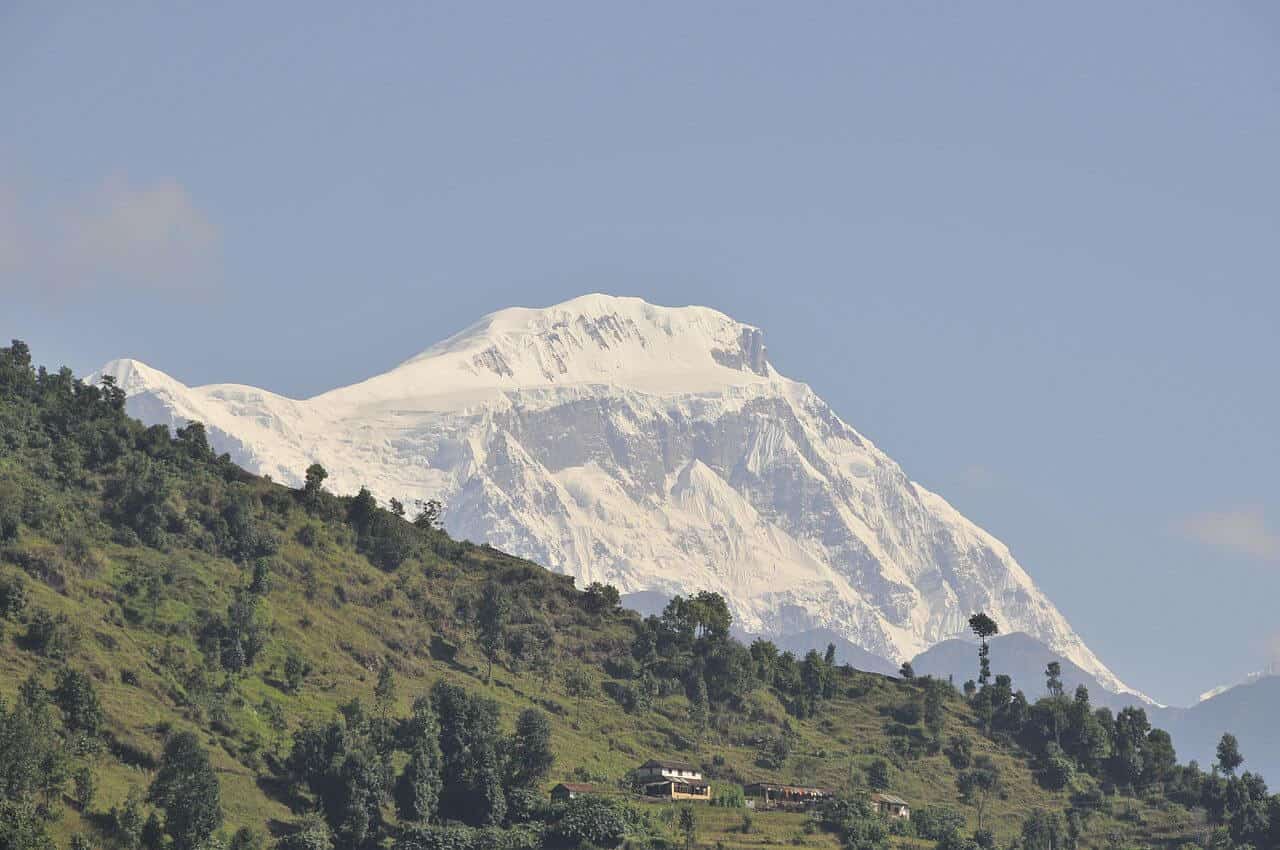
Although short, Dhampus Village Trek is a classic adventure in the lower reaches of the Annapurna Sanctuary. Located northwards of Pokhara valley, Dhampus village is well-known among the trekkers for its fantastic sunrise view over the range of Annapurna, Machhapuchhre, and Dhaulagiri.
Trekking to Dhampus offers both natural as well as cultural experiences. This small Gurung settlement provides an opportunity to witness the ancient cultures, their lifestyles, and hospitality.
The adventure begins with a 30-minute drive from Pokhara to Phedi. Upon reaching Phedi, the trek starts along the steep staircase along the densely forested trail. The route navigates through small settlements and terraced farms towards the hilltop of the Dhampus. Resting in the lap of Annapurna, Dhampus offers a marvelous view of the mountains. The next day, the route heads towards another popular viewpoint of Pokhara at Sarangkot.
Brief and accessible, the pleasant trails of Dhampus Village is ideal for novice trekkers and for those who are willing to go trekking with kids.
Dhampus Village Trek Facts
| Number of Days | 3 Days |
| Maximum Elevation | 1,650 meters at Dhampus |
| Trip Difficulty | Easy |
| Best Time to Trek | Autumn and Spring |
| Accommodation | Teahouses |
| Walking Duration | 3-4 hours per day |
Dhampus Village Trek Highlights
- Explore Nepal’s famous adventure destination, Pokhara
- Relatively easy and comfortable trek in the Annapurna Sanctuary
- Enjoy the splendid Himalayan panorama from the hill station of Dhampus
- A deeper understanding of Gurung culture and their lifestyle
- Breathtaking sunrise view from Sarangkot
Outline Itinerary of Dhampus Village Trek
| Day | Itinerary | Altitude from (Meters) | Altitude to (Meters) | Trekking Duration |
|---|---|---|---|---|
| 1 | Drive from Pokhara to Phedi (1,130 meters) and Trek to Dhampus | 900 | 1,650 | 3-4 hours |
| 2 | Trek from Dhampus to Sarangkot | 1,650 | 1,600 | 5-6 hours |
| 3 | Trek from Sarangkot to Pokhara | 1,600 | 900 | 3-4 hours |
4. Ghandruk Trek
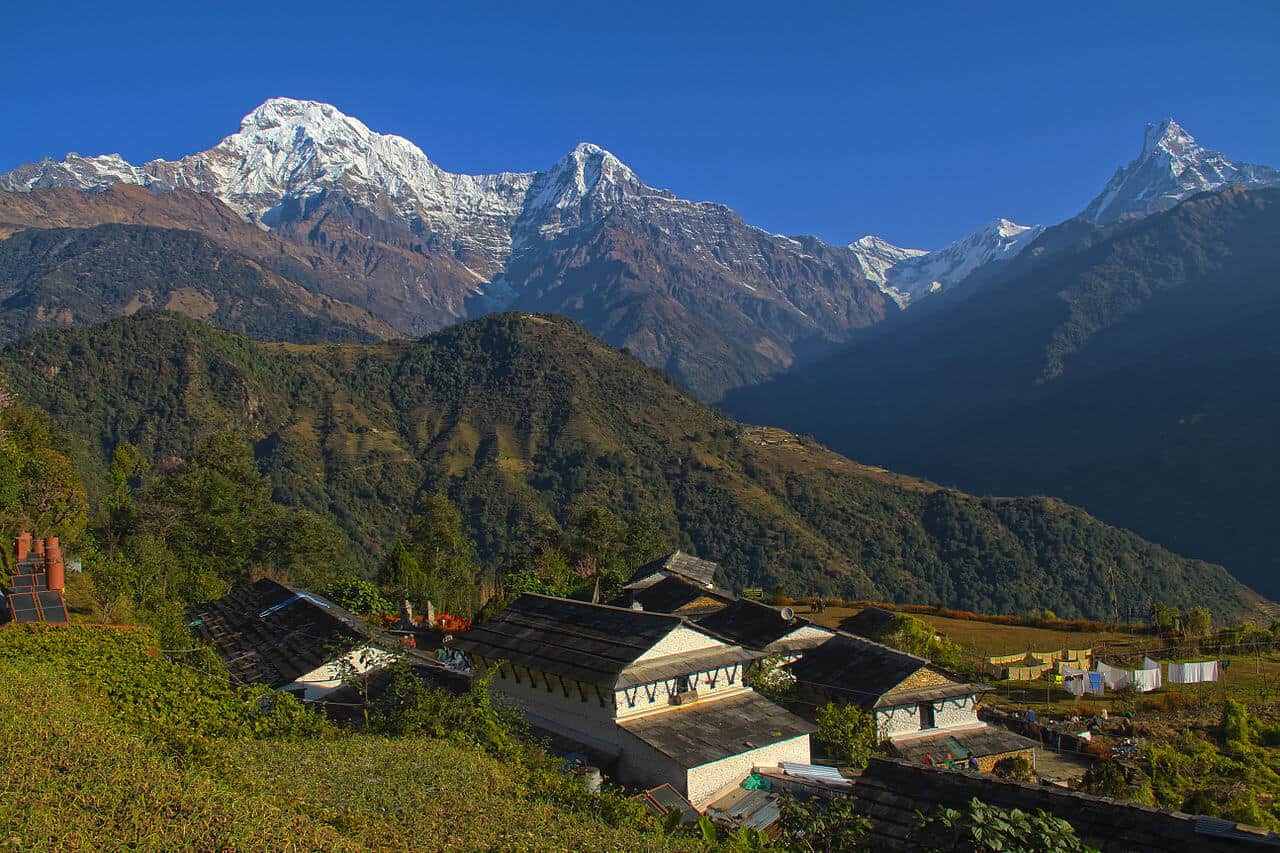
Ghandruk Trek is another popular short trek in the Annapurna region. At an elevation of 1,940 meters, this beautiful village is a perfect blend of natural, cultural, and historical ambiance. This short and gratifying walk is excellent for those with limited time but wants to embrace the true beauty of the Himalayas.
Along the riverbank of Modi Khola, the route to Ghandruk village is surrounded by blooming rhododendron forests. As the village is located en-route Annapurna Base Camp, the trail is well-trodden by the dedicated trekkers embarking on the classic ABC Trek.
Ghandruk Trek rewards the trekkers with a close-up view of Annapurna massif, Machhapuchhre, and Hiunchuli. Along with the mountain sights, this Gurung village entails cultural as well as historical values. You can witness the unique Gurung culture, their distinct lifestyle, and their warm hospitality. Additionally, you can also explore the village and visit the traditional Gurung museum to get an insight into the history and cultures of the locals.
Only five hours away from Pokhara, Ghandruk Trek is one of few short treks that provides an authentic trekking experience in the lap of Himalayas. Even in a short duration, trekkers can actually get an opportunity to appreciate the taste of the classic treks of Nepal.
Ghandruk Trek Facts
| Number of Days | 3 Days |
| Maximum Elevation | 1,940 meters at Ghandruk |
| Trip Difficulty | Easy |
| Best Time to Trek | Autumn and Spring |
| Accommodation | Teahouses/Homestay |
| Walking Duration | 5 hours per day |
Ghandruk Trek Highlights
- Stand at the shore of serene Phewa Lake and explore the vibrant city of Pokhara
- Travel across the dense rhododendron forest of lower Annapurna
- Visit the intriguing Gurung museum at Ghandruk
- Relish the adjacent view of Annapurna South, Machhapuchhre, and Hiunchuli
- Explore the traditional village and rustic lifestyle of Gurungs and Magars
Outline Itinerary of Ghandruk Trek
| Day | Itinerary | Altitude from (Meters) | Altitude to (Meters) | Trekking Duration |
|---|---|---|---|---|
| 1 | Drive from Pokhara to Nayapul (1,070 meters) and Trek to Ghandruk | 900 | 1,940 | 5 hours |
| 2 | Explore Ghandruk | 1,940 | 1,940 | 6-7 hours |
| 3 | Trek from Ghandruk to Nayapul (1,070 meters) and Drive Back to Pokhara | 1,940 | 900 | 5 hours |
5. Balthali Village Trek
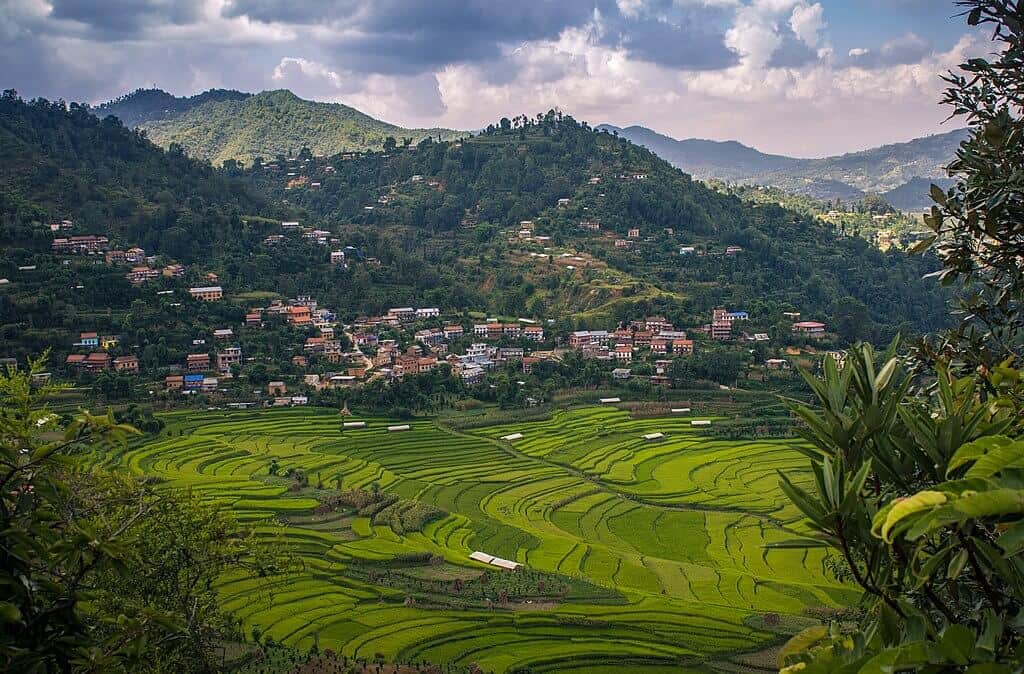
Balthali Village Trek is an incredible rural walk on the outskirt of Kathmandu valley. Ideal for nature enthusiasts and bird watchers, this village walk offers delightful holiday with a marvelous view of Himalayan ranges.
Although it is located just a few hours away from Kathmandu, the routes of Balthali Village are less trodden and are untouched by modern civilization. This short adventure begins with a drive from Kathmandu to Dhulikhel. The walk starts from Dhulikhel towards the monastery of Namo Buddha and then towards the rustic village of Balthali.
Balthali Village Trek rewards the trekkers with extensive flora and fauna along with the grand panorama of Manaslu, Langtang Himal, Gaurishankar Himal, Ganesh Himal, and Dorje Lakpa. Not only does this trek offer mountain spectacles, but it also provides cultural as well as historical experiences. Compared to other short treks, the trails to Balthali Village is far less crowded.
Balthali Village Trek Facts
| Number of Days | 3 Days |
| Maximum Elevation | 1,750 meters at Namo Buddha |
| Trip Difficulty | Easy |
| Best Time to Trek | Autumn and Spring |
| Accommodation | Teahouses |
| Walking Duration | 4-5 hours per day |
Balthali Village Trek Highlights
- Enjoy the distant panorama of the mountains from Dhulikhel
- Visit the sacred monastery of Namo Buddha
- Explore the ancient village of Balthali
- Witness the well-preserved Newari culture and architecture in Panauti village
Outline Itinerary of Balthali Village Trek
| Day | Itinerary | Altitude from (Meters) | Altitude to (Meters) | Trekking Duration |
|---|---|---|---|---|
| 1 | Drive from Kathmandu to Dhulikhel and Trek to Balthali via Namo Buddha (1,750 meters) | 1,400 | 1,600 | 4-5 hours |
| 2 | Explore Balthali Village | 1,600 | 1,600 | – |
| 3 | Trek from Balthali to Panauti and drive to Kathmandu | 1,600 | 1,400 | 4-5 hours |
6. Kalinchowk Trek
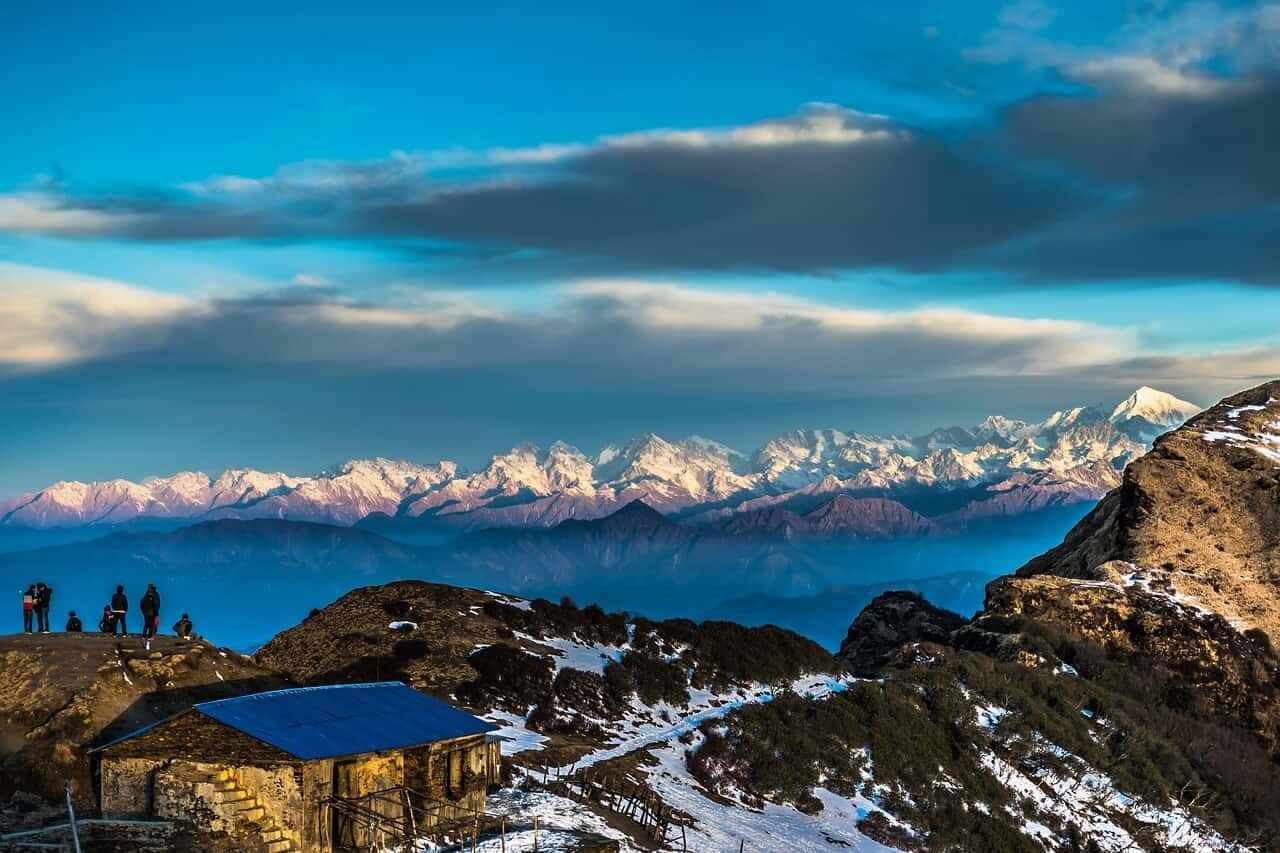
An incredible walk to the pilgrimage of Kalinchowk Bhagwati Temple at an elevation of 3,700 meters is one of the best short treks in Nepal. Besides the temple, you are most likely to have the entire route to yourself as this hilltop is far less traveled compared to other popular trekking destinations in the country.
This adventure begins with a half-day drive from Kathmandu to a small settlement of Charikot. Passing along the rhododendron forests, the trail then leads to Kuri village. The dense forest provides an opportunity to spot a variety of birds, including Lophophorous, Nepal’s national bird. Next morning, you’ll hike to the pilgrimage site of Kalinchowk Bhagwati, a temple located on the summit of the high and vertiginous hill.
Along with the spiritual healing, the summit of the hill offers a panoramic view of the mountains. Additionally, this trek is excellent for trekkers who are keen on local cultures as this region is inhabited by multiple ethnic groups, including Brahmins, Tamangs, and Sherpas.
Kalinchowk Trek Facts
| Number of Days | 4 Days |
| Maximum Elevation | 3,700 meters at Kalinchowk Temple |
| Trip Difficulty | Easy |
| Best Time to Trek | Autumn and Spring |
| Accommodation | Teahouses |
| Walking Duration | 4-5 hours per day |
Kalinchowk Trek Highlights
- Hike to the famous Hindu pilgrimage site at Kalinchowk Bhagwati Temple
- Bask in the beauty of magnificent mountain panorama from the top of Kalinchowk
- Opportunity to savor the beauty of rhododendron forests over the trail
- Explore Charikot, the famous trade center of Dolakha
- Stay overnight at Kuri village — a small settlement tucked under the hilltop of Kalinchowk
Outline Itinerary of Kalinchowk Trek
| Day | Itinerary | Altitude from (Meters) | Altitude to (Meters) | Trekking Duration |
|---|---|---|---|---|
| 1 | Drive from Kathmandu to Charikot | 1,400 | 1,515 | 4 hours |
| 2 | Trek from Charikot to Kuri | 1,515 | 3,450 | 6 hours |
| 3 | Excursion to Kalinchowk Temple (3,700 meters) and Hike to Charikot | 3,450 | 1,515 | 5-6 hours |
| 4 | Drive to Charikot to Kathmandu | 1,515 | 1,400 | 4 hours |
7. Sikles Trek
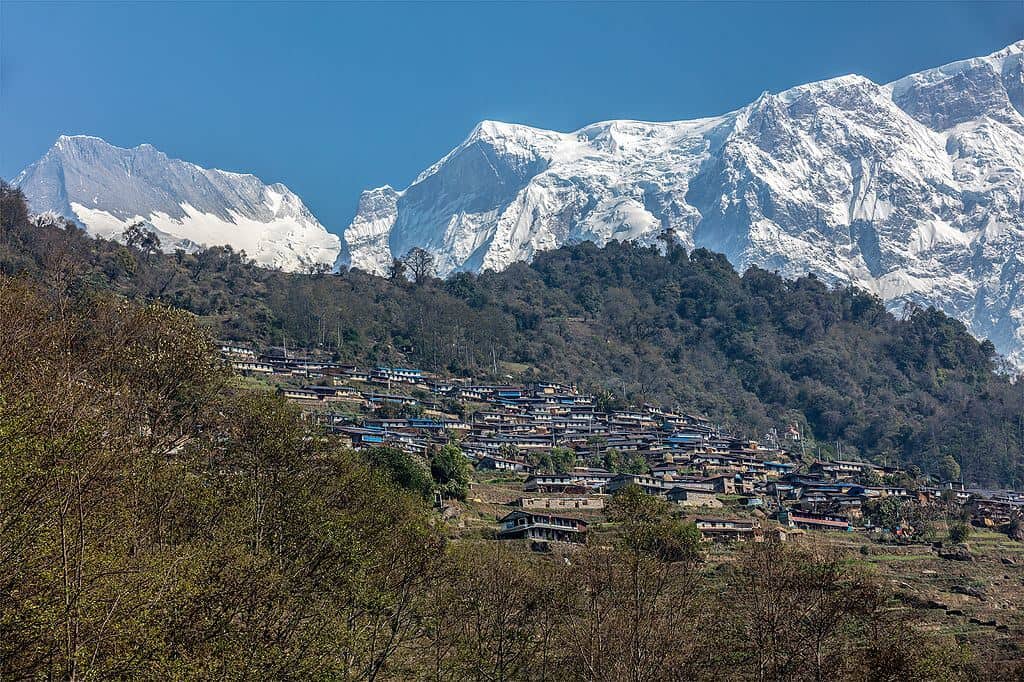
Sikles Trek is one of the least frequented trekking destinations in the Annapurna region. The isolated trails of Sikles take you through a serene Gurung village that depicts the ancient and raw Nepali culture and lifestyle.
The trek comprises of traditional villages, alpine meadows, rhododendron forests, and patterns of terraced fields. Nestled below the towering Annapurna massifs and Lamjung Himal, this small settlement also offers grandiose mountain views.
Commencing the adventure from Pokhara, this trek is an opportunity to explore the city of lakes. From the touristy sidewalks of Pokhara to the rough terrains of the countryside, Sikles Trek offers diverse terrain and cultural ambiance of rural Nepal.
Tara Hilltop marks the highest point of the trek at an elevation of 3,280 meters. This vantage point rewards trekkers with a marvelous view of the Annapurna Massif, Lamjung Himal, and Machhapuchhre.
Sikles Trek Facts
| Number of Days | 4 Days |
| Maximum Elevation | 3,280 meters at Tara Hilltop |
| Trip Difficulty | Easy |
| Best Time to Trek | Autumn and Spring |
| Accommodation | Teahouse/Homestays |
| Walking Duration | 6-7 hours per day |
Sikles Trek Highlights
- Savor the beauty of Pokhara city and bask in the shore of serene Phewa Lake
- Picturesque spectacles of Annapurna, Machhapuchhre, Hiunchuli, and Gangapurna Mountains
- Explore the remote village of Sikles and indulge in the rustic lifestyle
- Experience the unique Gurung culture and their hospitality
- Hike to Tara Hilltop at an elevation of 3,280 meters
Outline Itinerary of Sikles Trek
| Day | Itinerary | Altitude from (Meters) | Altitude to (Meters) | Trekking Duration |
|---|---|---|---|---|
| 1 | Drive from Pokhara to Chansu and Trek to Tangting | 900 | 1,580 | 4 hours |
| 2 | Trek from Tangting to Sikles Village | 1,580 | 1,980 | 5-6 hours |
| 3 | Trek from Sikles Village to Ghale Kharka via Tara Hilltop (3,280 meters) | 1,980 | 1,810 | 6-7 hours |
| 4 | Trek from Ghale Kharka to Pokhara | 1,810 | 900 | 6-7 hours |
8. Panchase Trek
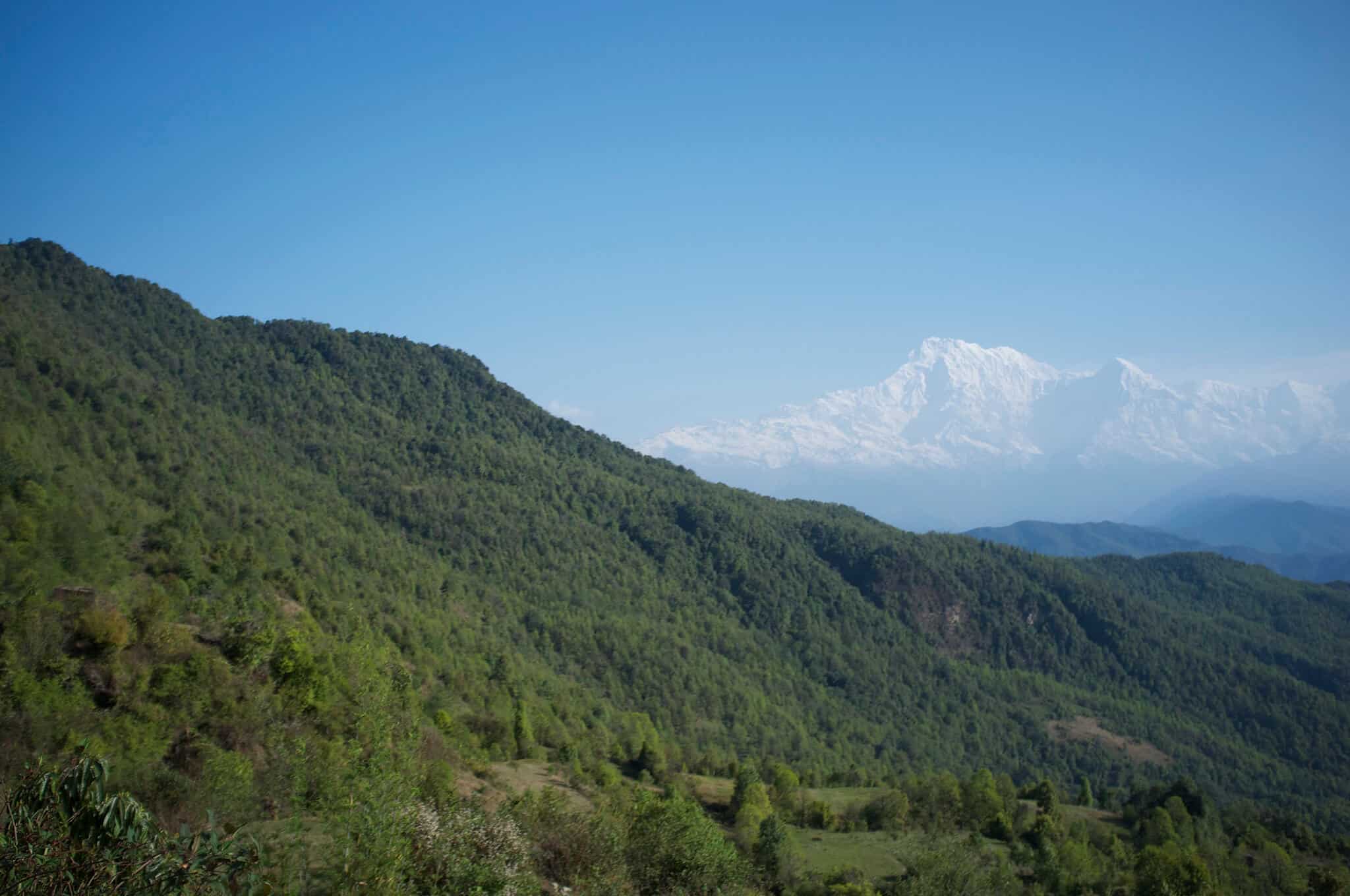
Located on the edge of Pokhara, Panchase Trek is a pleasant walk at lower altitudes of the Annapurna region. This ancient trekking route is ideal for novice trekkers who want to test their physical endurance before embarking on the longer treks or for those who enjoy less-crowded trails.
The off the beaten track route of Panchase is well-marked and takes you through patterns of farmlands, dense forests, and several old villages. The highest navigable point of the trek is Panchase Peak at 2,500 meters. This viewpoint offers a stunning panorama of Annapurna, Machhapuchhre, Dhaulagiri, and Manaslu along with the breathtaking sight of Pokhara valley.
The enchanting forest of Panchase is quite diverse with a large number of orchid species. In just three days, Panchase Trek offers an authentic trekking experience at the easy-paced trails of the region.
Panchase Trek Facts
| Number of Days | 3 Days |
| Maximum Elevation | 2,500 meters at Panchase Peak |
| Trip Difficulty | Easy |
| Best Time to Trek | Autumn and Spring |
| Accommodation | Teahouses |
| Walking Duration | 5-6 hours per day |
Panchase Trek Highlights
- Spend time in the popular tourists’ destination at Pokhara
- Relatively comfortable walk in the Annapurna region
- The grandiose view of Annapurna, Machhapuchhre, Manaslu, and Dhaulagiri
- Excursion to the World Peace Pagoda
- Hike to Panchase Peak at an elevation of 2,500 meters
Outline Itinerary of Panchase Trek
| Day | Itinerary | Altitude from (Meters) | Altitude to (Meters) | Trekking Duration |
|---|---|---|---|---|
| 1 | Trek from Pokhara to Pumdi | 900 | 1,300 | 3-4 hours |
| 2 | Trek from Pumdi to Panchase | 1,300 | 2,080 | 5 hours |
| 3 | Excursion to Panchase Peak (2,500 meters) and Trek to Kande | 2,080 | 1,716 | 4 hours |
9. Royal Trek
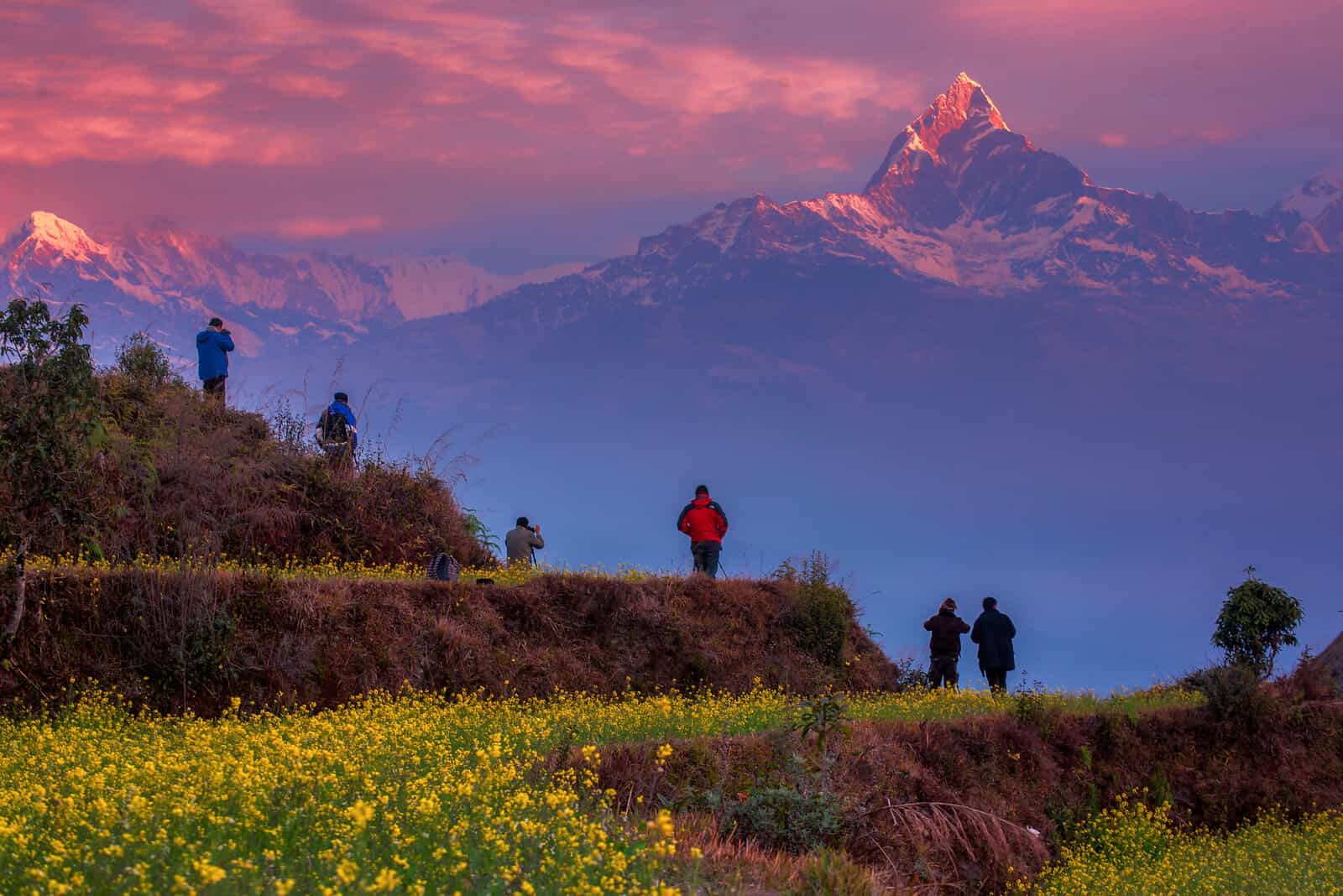
Royal Trek is a short trek made famous by personalities like Prince Charles and Mick Jagger. This pleasant adventure takes you through rustic villages, mountain views, lakes, terraced farmlands, and unique cultures.
Located north of Pokhara valley, this trek is an excellent option for beginners who have limited time on their hands. This trek navigates a shrub-like path in the foothills of Annapurna massif. Walking along the traditional Gurung village, this trek provides an in-depth insight of rich cultures and traditions.
The routes of Royal Trek is surrounded by panoramic views of Machhapuchhre, Annapurna, and Lamjung Himal.
Royal Trek Facts
| Number of Days | 4 Days |
| Maximum Elevation | 1,760 meters at Syaklung |
| Trip Difficulty | Easy |
| Best Time to Trek | Autumn and Spring |
| Accommodation | Teahouses/Homestays |
| Walking Duration | 5-6 hours per day |
Royal Trek Highlights
- Walk along the footprints of Prince Charles
- Relatively easy walk in the foothills of Annapurna
- Unique cultural experience and diverse traditional practices
- Close-up spectacles of Annapurna, Machhapuchhre, Dhaulagiri, and Langtang
- Opportunity to indulge with the locals and get insights on their rustic lifestyle
Outline Itinerary of Royal Trek
| Day | Itinerary | Altitude from (Meters) | Altitude to (Meters) | Trekking Duration |
|---|---|---|---|---|
| 1 | Trek from Pokhara to Kalikasthan | 900 | 1,370 | 4-5 hours |
| 2 | Trek from Kalikasthan to Syaklung | 1,370 | 1,760 | 5-6 hours |
| 3 | Trek from Syaklung to Chisapani | 1,760 | 1,550 | 5-6 hours |
| 4 | Trek from Chisapani to Pokhara | 1,550 | 900 | 1 hour |
10. Everest View Trek
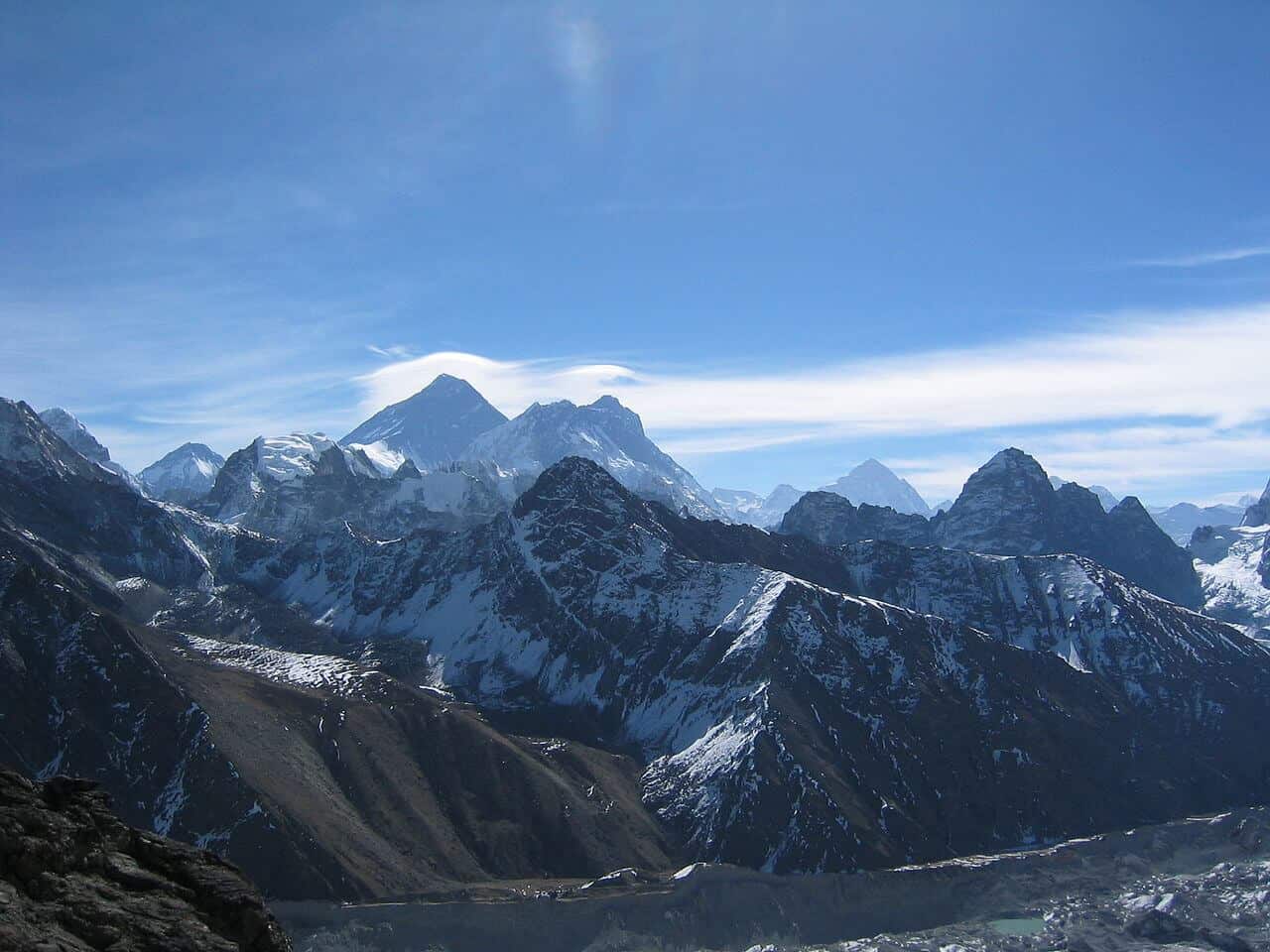
Well, it may come as a surprise, but you can actually get a close-up view of Mount Everest and its surrounding peaks in as little as five days. Everest View Trek is a suitable option for those who are short on time for the complete Everest Base Camp Trek but are not willing to compromise the beauty of the Himalayas. This concise yet incredible adventure includes a wide range of mountain scenery along with cultural encounters and local experiences.
The trek begins with an adventurous flight from Kathmandu to the small airstrip of Lukla. Passing along the enchanting forests of Sagarmatha National Park, the route navigates towards the vibrant Sherpa settlement of Namche Bazaar. This historic town, leaning over an arch-shaped mountain, still retains its century-old culture, lively ambiance, and warm hospitality,
You can also explore Khumjung and visit the famous Hillary School and the ancient monastery of the village. The sacred monastery of Khumjung purportedly holds a Yeti scalp protected in a glass box.
The major highlight of this trek is the excursion to Everest View Hotel. Located at an elevation of 3,962 meters, this luxury establishment is one of the world’s highest-altitude hotels. Hidden on a ridge, Everest View Hotel blends gracefully with the marvelous Everest range and offers a 360-degree panorama of the surrounding massifs.
Although this trek is not as demanding as other treks in the Everest region, it is no walk in the park either. Some sections of the treks have steep uphills and challenging terrains. Therefore, it is better to prepare well and pack the essential gear before heading to Everest View Trek.
Everest View Trek Facts
| Number of Days | 5 Days |
| Maximum Elevation | 3,962 meters at Everest View Hotel |
| Trip Difficulty | Moderate |
| Best Time to Trek | Autumn and Spring |
| Accommodation | Teahouses |
| Walking Duration | 5-6 hours per day |
Everest View Trek Highlights
- Remarkable flight to the world’s most extreme airport, Lukla
- Close up view of Everest, Ama Dablam, Lhotse, Makalu, and Cho Oyu
- Visit the fascinating Sherpa Museum at Namche Bazaar
- Explore Khumjung, the largest settlement in Khumbu region
- Visit the ancient monastery and Hillary School at Khumjung
Outline Itinerary of Everest View Trek
| Day | Description | Altitude from (Meter) | Altitude to (Meter) | Trekking Duration |
|---|---|---|---|---|
| 1 | Fly to Lukla (2,800 meters) and Trek to Phakding | 1,400 | 2,652 | 3-4 hours |
| 2 | Trek from Phakding to Namche Bazaar | 2,652 | 3,440 | 5-6 hours |
| 3 | Excursion to Everest View Hotel (3,962 meters) and Khumjung Village (3,780 meters) | 3,440 | 3,440 | – |
| 4 | Trek from Namche Bazaar to Lukla | 3,440 | 2,800 | 6-7 hours |
| 5 | Fly from Lukla to Kathmandu | 2,800 | 1,400 | 40 mins |
Best Time to Trek in Nepal
Technically, you can go trekking in Nepal all year round. Each season brings a different ambience and diverse scenery across the villages and mountains of the country. While seasonal constraints may restrict a few challenging treks, most of the short treks can be done throughout the year.
Autumn (September, October and November) and spring (March, April and May) are considered the best time to trek in Nepal. During these two seasons, the weather remains mostly moderate and stable which is ideal for long trekking hours. The view is also exceptional during this time of the year as the sky is much clearer and the route less clouded.
Spring brings warm temperatures, blooming rhododendrons, and blossoming forests around the remote mountains of Nepal. If you choose to travel in early spring, the weather tends to be slightly chilly. This makes low elevation treks ranging from 800 meters to 2,500 meters more pleasant to walk in the early spring. However, the entire spring season offers a pleasant and warm temperature with radiant and vibrant textures while trekking in Nepal.
Autumn brings moderate temperatures offering fantastic trekking conditions. As the monsoon washes away the dust and pollution, autumn tends to have clear blue skies and bright sun throughout the day. However, the stabler weather attracts more travelers making the trail way too crowded.
Winter (December to February) brings extreme weather in the high altitudes, which is not favorable for trekking. However, if you’re planning to go on a short and low altitude trek, winter may not be much of an issue. Although the temperature is relatively low during this time of the year, the trails at lower elevations do not see excessive snowfall. The mornings are usually foggy, but the daytime is generally warmer. However, make sure to pack warm clothes and a sleeping bag if you’re trekking in winter.
Monsoon (June to August) brings heavy rainfalls and harsh trail conditions, so it is typically not advised to trek during this time of the year. The route is mostly wet, slippery, and muddy with a lot of leeches during this season. It also brings the risk of potential landslides in the remote places of Nepal. Mountains are usually obscured under the clouds, and the scenery is not entirely clear in monsoon. However, the trekking routes are generally less crowded in monsoon. So, if you enjoy the isolation and solitude, this may quite be the ideal time to go trekking in Nepal. It is better to carry waterproof clothes and jackets to avoid the rain showers during the monsoon season.
The following table shows the average temperature and precipitation of some of the significant destinations for short treks in Nepal:
| Location | Elevation (meters) | Average Minimum Temperature (°C) | Average Maximum Temperature (°C) | Annual Rainfall (mm) |
|---|---|---|---|---|
| Kathmandu | 1,400 | 10.1 | 23.6 | 1505 |
| Pokhara | 900 | 13.1 | 25.3 | 3474 |
| Dhulikhel | 1,550 | 9.1 | 21.7 | 1711 |
| Nagarkot | 2,175 | 7.7 | 19.5 | 2287 |
| Sundarijal | 1,350 | 10.3 | 23.2 | 1723 |
| Lukla | 2,800 | 2.8 | 14.7 | 1838 |
Accommodation and Food
There are basically two types of trekking in Nepal — teahouse trek and camping trek. While most of the short treks in Nepal provide teahouse services, camping treks are often considered the best way to experience the wilderness.
Teahouse Trek
Teahouse trek is the most popular way to go trekking in Nepal. Most of the trekking routes offer small lodges that provide comfortable bedding and meals to the trekkers. In recent years, plenty of teahouses are opened en-route these popular short treks.
Teahouse trek is also the most comfortable way to travel in the mountains. Although most teahouses offer basic amenities like shared rooms, food, hot showers, and charging facilities, it is still a luxury considering the remoteness of the trail.
Most of the teahouses on the short treks offer extensive food choices on their menu. Dal Bhat is the most popular food in the mountains. This traditional Nepali meal consists of steamed rice, vegetables, lentil soup, and pickles.
Camping Trek
Camping trek is a comparatively unpopular and slightly challenging alternative to trek in Nepal. This classic style of trekking offers an incredible experience to explore the remoteness of the Himalayas.
As you need to carry tents, food, fuel, and other camping equipment, it is advised to book camping treks through an authorized trekking company. This type of trek is operated with the guidance of a professional guide, cook, and crew members who assist you to set up tents for accommodation and to cook meals.
On a camping trek, the foods are usually cooked by the kitchen staff and served in the dining area. Therefore, the menu may not be as extensive as teahouse treks.
Although camping is much more adventurous compared to teahouse treks, this type of trek is ideal for avid adventurers and trekkers who are looking to experience the raw wilderness of the trails.
Packing List for Trekking in Nepal
Whether it is a day hike or multi-day adventure, it is crucial to pack the right gears while trekking in Nepal. What you need to pack for the trek mostly depends on what time of the year you choose to travel. If you choose to travel during winter or monsoon, you may need to pack more equipment. Likewise, if you choose to travel during autumn or spring, it is possible to compromise on a few gears that may not be necessary.
A common mistake a lot of novice trekkers tend to make before the trek is packing too much gear. However, packing too much does not necessarily mean packing efficiently. It is always important to keep your weight as low as possible. But, you should never miss out on the essentials to keep the weight of your backpack down. Make sure to pack light and pack wise!
Here’s a list of recommended items while going for a multi-day trek in the Himalayas of Nepal:
Bags:
- Backpack
- Duffle Bag
- Daypack
Trekking Wearables:
- Trekking Shirt
- Trekking Trousers
- Trekking Shorts
- Hiking Boots
- Hiking Socks
- Waterproof Shell Jacket
- Sun Protection Hat
- Buff/Neck Gaiter
Additional Clothes:
- Down Jacket
- Gloves
- Beanie
- Fleece
- Wool Socks
- Trainers/Sandals
- Breathable Underwear
- Sports Bra
Important Accessories:
- Trekking Poles
- Sleeping Bag
- Basic Medical Kits
- UV Protection Sunglasses
- Water Bottle
- Water Purification Tablets
- Trekking Towels
- Headlamp
- Cash
- Hand Sanitizers
- Sunscreen/Lip Balm
- Toiletries
- Camera
- Portable Chargers
Guided or Independent — How to Trek in Nepal
Guided Trek
Although most of the short treks are considered relatively easy and comfortable to walk, it is always better to book the trek through an authorized company. If you’re one of those travelers, who tend to enjoy the hassle-free experience in the wilderness, the guided trek is the perfect option for you.
If you choose to book the trip through the authorized company, they handle all the logistics such as itinerary, transportation, route navigation, potential campsites, food, and accommodation. Guided trek helps save a lot of time and energy that is required while planning and preparing for the trek.
Additionally, the company also provides an experienced trekking guide to accompany you throughout the trek. This can add a sense of safety and well-being while trekking in the remote mountains of Nepal. Trekking guides also provide you some insight regarding the mountains, places, culture, lifestyle, and local flora and fauna.
It is ideal to go on a guided trek if you’re a novice trekker and only just starting to trek around the Himalayas.
Pros:
- Hassle-free
- Safe and comfortable
- Expert assistance
- Saves time and energy
- Employment opportunities to the locals
Cons:
- No flexibility to change the itineraries
- More expensive
- Less adventurous
Independent Trek
If you have prior trekking experiences and are planning to do it with more freedom, independent treks are an ideal choice for you. Since you do not have to walk through high altitudes and challenging passes in the short treks, you do not necessarily need to book the trip through an agency.
If you are confident enough to do it on your own, an independent trek is an excellent way to explore the rustic villages of Nepal. Trekking without a guide gives you more control over several aspects while traveling. On independent treks, you can change the itinerary, walk on your own pace, take side trips, choose the teahouses, eat what you want, and stop whenever you feel like it. This kind of flexibility is hard to get in guided tours.
But, keep in mind that independent treks are not for everyone. Trekking without any assistance means you are responsible for the entire logistics of the trek. Since you’ll have to handle things like itinerary, permits, transportation, food, and accommodation, the independent treks are most likely to be less comfortable compared to the organized treks.
If you’re planning to trek without a guide, it is handy to learn a few Nepali words and cultures of the place.
Pros:
- Sense of confidence and self-reliance
- Luxury to choose your itinerary
- Relatively cheaper
- More adventurous
Cons:
- Slightly risky and unsafe
- Independent treks can be arduous
- Demands a lot of time and energy
- Might have to deal with isolation and loneliness
Insurance for the Trek
Most people often tend to neglect travel insurance on short treks as they are considered relatively more comfortable compared to other treks like Everest or Annapurna. However, travel insurance is a must-have while heading to the Himalayas of Nepal.
While the risk of altitude sickness is somewhat less on the short treks, there are tons of difficult situations you might stumble upon while trekking in Nepal. Except for altitude sickness, sprained ankles, respiratory infections, hyperthermia, and food poisoning are common issues that might occur while trekking.
If you come across any of these situations, the medical costs at such high altitudes may be extremely high. Therefore, it is handy to have insurance that covers your entire medical costs. You may also come across several unforeseeable circumstances while trekking in the mountains.
While you may not need an extensive policy for the short treks, make sure your insurance covers hospital bills, accidents, natural disasters, trip cancellation, and theft. Although it is not mandatory, having proper insurance can compensate for the substantial expenses in case you come across any of these difficult situations.
Useful Tips for Trekking in Nepal
While trekking in Nepal is truly awe-inspiring experience, it is essential to prepare well for the trip. Lack of forethought and preparation can spoil the entire trek. Many trekkers tend to neglect it, especially for the short treks. However, it is always better to invest a decent time planning and preparing for the trek to make the best out of it.
Here are a few things you should know before trekking in the mountain trails of Nepal:
Get Ready — Stay Fit
While short treks are usually considered moderate or easy in terms of difficulty, it is still essential to maintain your physical fitness. The best thing to do before catching a flight to Nepal is to go for a full body checkup to ensure proper health conditions.
Although altitude sickness may not be an issue in short treks, you’ll still have to walk long hours in the rugged trails every day. Therefore, it is handy to engage in cardio and leg exercises to prepare for the trek.
Drink Plenty of Fluids
Even in short treks, you’ll have to walk for at least 5 to 7 hours on a rough trail. Walking for long hours means your body will lose a significant amount of electrolytes. Therefore, it is crucial to drink plenty of water and fluids to stay hydrated on the trek. On average, it is advised to drink at least 4 to 5 liters of water regularly.
It is handy to carry a water bottle and fill the water in the local teahouses instead of buying bottled water. The single-use water bottles cause litter and pollutants, which has become a critical issue in most trekking routes of Nepal.
Purify Water
The water purifier is hands down one of the essential items you need to carry while trekking in Nepal. As you’ll be walking through several remote villages, most of the villages may not have access to safe drinking water.
While teahouses may provide you with boiled water for drinking, they’ll usually charge extra for it. Also, the teahouse may not always be accessible on the trail. So, you may, at times, have to fill the bottles from a local stream or tap. Make sure to use water purifiers or purification tablets to treat the water before drinking, especially when you refill it from the tap or local streams.
Carry Trekking Poles
While trekking poles are not mandatory, we still recommend you to carry a pair while trekking in Nepal. Even on short treks, trekking poles can come handy as they reduce the stress on your knee joints and leg muscles by up to 20 percent.
Trekking poles are also a great tool to maintain your balance while walking on rugged terrains and slippery rocks. Sticking a pole in these trails can prevent you from losing the grip and save you from injury.
Eat Healthy Meals
Multi-day trekking demands a lot of exertion and serious commitment. So, it is vital that you fuel up your energy with a healthy diet every day. Your daily meal should contain a high level of energy and enough proteins to get you through the long days with ease.
Dal Bhat is the most popular meal while trekking in the remote mountains of Nepal. Dal Bhat comprises of steamed rice, lentils, vegetables, and pickles. The portion of this meal is quite filling and is considered to be a great source of energy for trekking. Additionally, you can carry some snacks and protein bars in your daypack to get extra treats when you need it.
Avoid Cultural Shock
Before heading straight to the rustic villages of Nepal, do a little research about the cultures and customs of the country. This can help you stay familiar with the things you will come across during the trek and help you overcome the cultural shock.
Additionally, it is better to learn a few Nepali words and phrases before you come to Nepal. The locals will appreciate your effort and welcome you with their friendly smile.
Carry Sufficient Cash
Since you’ll be trekking for days in the remote parts of Nepal, it is essential to carry enough cash in your pocket. The ATMs are hard to come by on the trail once you depart from the major cities. Although there are a few ATMs available in more commercial trekking trails, they are often unreliable and out of service.
Also, it is better to carry local currency instead as the locals may not accept all the foreign currencies. If possible, make sure to break the money into smaller bills as it will be much more comfortable while paying the amount in the teahouses.
FAQs
1. How fit do I need to be to go on short treks in Nepal?
Although most of the short treks are relatively easy and do not take you to extremely high elevations, you need to be perfectly fit for the trek. You do not have to be an athlete or gym-freak to go on the short treks. If you’re fit enough to walk for 5-6 hours in the remote mountain trails, you’re good to go.
We recommend you to engage in cardio exercises like running, swimming, cycling, or hiking to build decent stamina before going off on the adventure.
2. Do I have to hire a guide or porter for the short treks?
Although most of the short treks are doable without the assistance of a guide or porter, we highly advise you to hire them. It is because having a guide or porter is a much safer and comfortable way to walk in the Himalayas.
Additionally, you’ll also be helping the local economy and providing job opportunities for the locals by hiring them.
3. Is drinking water safe on the trek?
No, it is not advisable to drink water without treating them while on the trek. The most common source of water in the teahouses are local streams and tap. So, it is not safe to drink the water directly from these sources. We suggest you carry a water bottle and fill it in the teahouses. Also, bring a water purifier to treat the water before drinking.
4. Is there any risk of Acute Mountain Sickness (AMS)?
As most of the short treks do not exceed the altitude of 3,500 meters above sea level, the risk of altitude sickness is relatively minimal. However, it is always better to stay cautious, drink plenty of water, and walk on your own pace while trekking in the mountains.
5. Do I need travel insurance for short treks?
While short treks are considered relatively easy, it is highly recommended to have travel insurance before embarking on the remote trails of the Himalayas. Although the altitude is not much of a challenge, you may come across several unforeseeable situations while trekking in Nepal. So, make sure to have proper insurance that covers all the possible conditions.
Conclusion
With a variety of trekking routes that offer a different taste of the Himalayas, Nepal is truly one of the best trekking destinations across the globe. Although Nepal is widely known for longer treks in Everest and Annapurna Mountains, the shorter treks are second to none either.
For novice trekkers willing to test their ability or those who have limited time to undertake longer treks, short treks are the ideal option. From a few days’ walks to week-long adventures, Nepal embraces distinct trails and diverse terrains, even for short treks.

